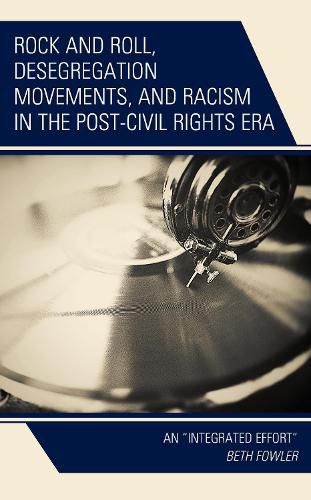Readings Newsletter
Become a Readings Member to make your shopping experience even easier.
Sign in or sign up for free!
You’re not far away from qualifying for FREE standard shipping within Australia
You’ve qualified for FREE standard shipping within Australia
The cart is loading…






The rock and roll music that dominated airwaves across the country during the 1950s and early 1960s is often described as a triumph for integration. Black and white musicians alike, including Chuck Berry, Little Richard, Elvis Presley, and Jerry Lee Lewis, scored hit records with young audiences from different racial groups, blending sonic traditions from R&B, country, and pop. This so-called desegregation of the charts seemed particularly resonant since major civil rights groups were waging major battles for desegregation in public places at the same time. And yet the centering of integration, as well as the supposition that democratic rights largely based in consumerism should be available to everyone regardless of race, has resulted in very distinct responses to both music and movement among Black and white listeners who grew up during this period. This book traces these distinctions using archival research, musical performances, and original oral histories to determine the uncertain legacies of the civil rights movement and early rock and roll music in a supposedly post-civil rights era.
$9.00 standard shipping within Australia
FREE standard shipping within Australia for orders over $100.00
Express & International shipping calculated at checkout
The rock and roll music that dominated airwaves across the country during the 1950s and early 1960s is often described as a triumph for integration. Black and white musicians alike, including Chuck Berry, Little Richard, Elvis Presley, and Jerry Lee Lewis, scored hit records with young audiences from different racial groups, blending sonic traditions from R&B, country, and pop. This so-called desegregation of the charts seemed particularly resonant since major civil rights groups were waging major battles for desegregation in public places at the same time. And yet the centering of integration, as well as the supposition that democratic rights largely based in consumerism should be available to everyone regardless of race, has resulted in very distinct responses to both music and movement among Black and white listeners who grew up during this period. This book traces these distinctions using archival research, musical performances, and original oral histories to determine the uncertain legacies of the civil rights movement and early rock and roll music in a supposedly post-civil rights era.